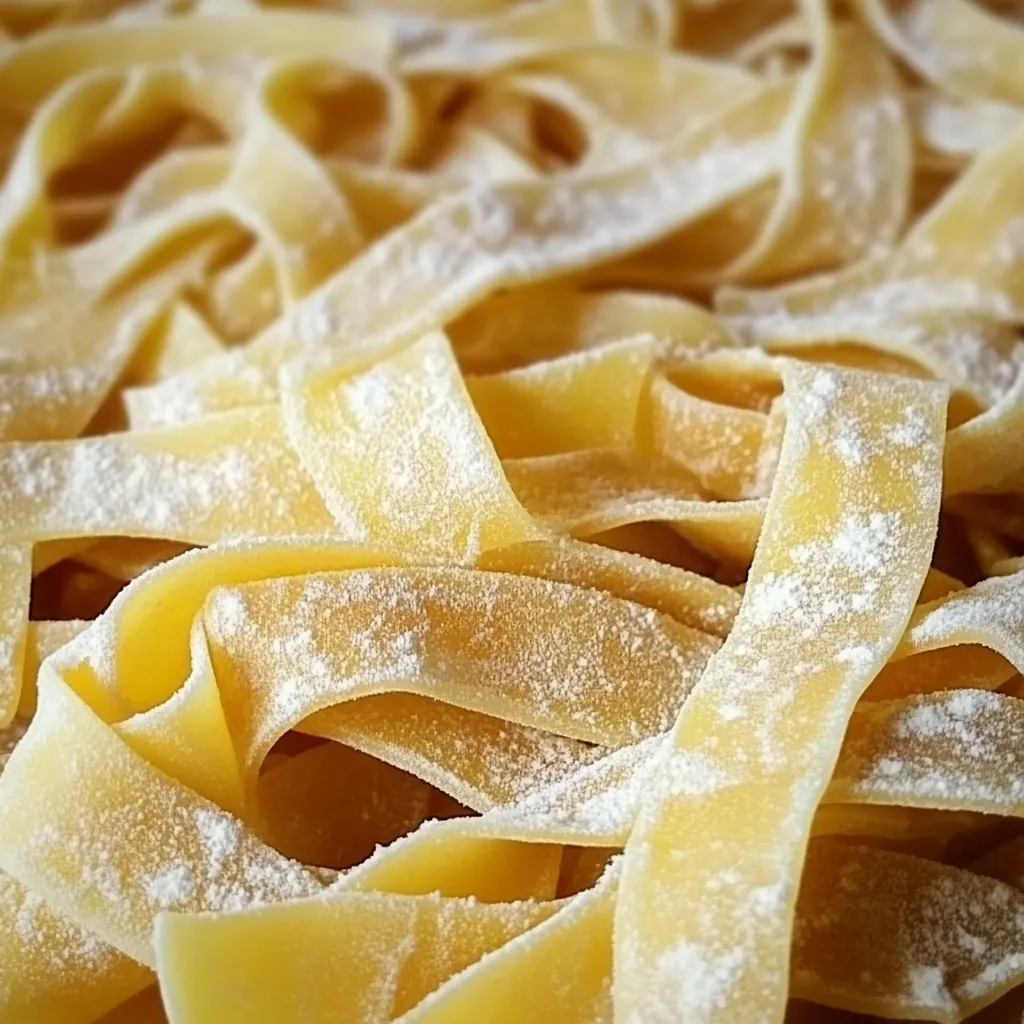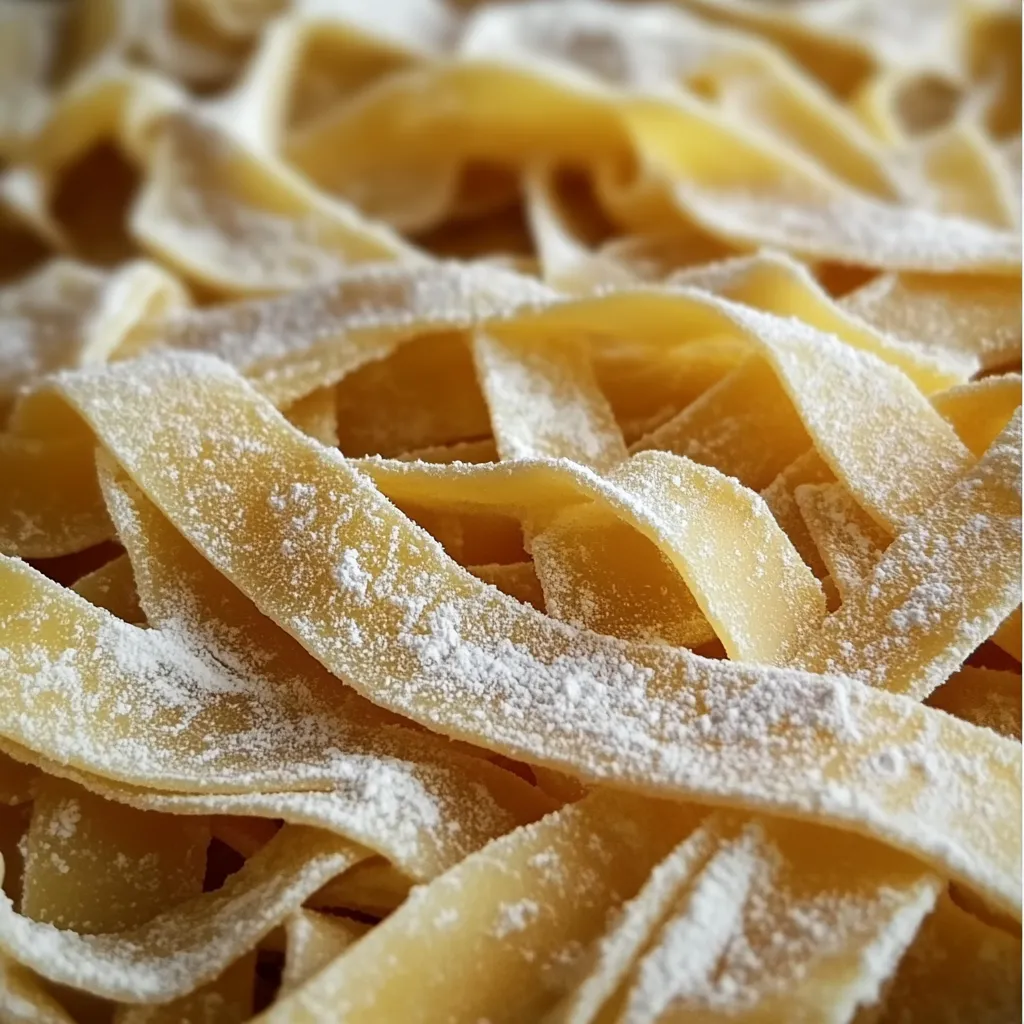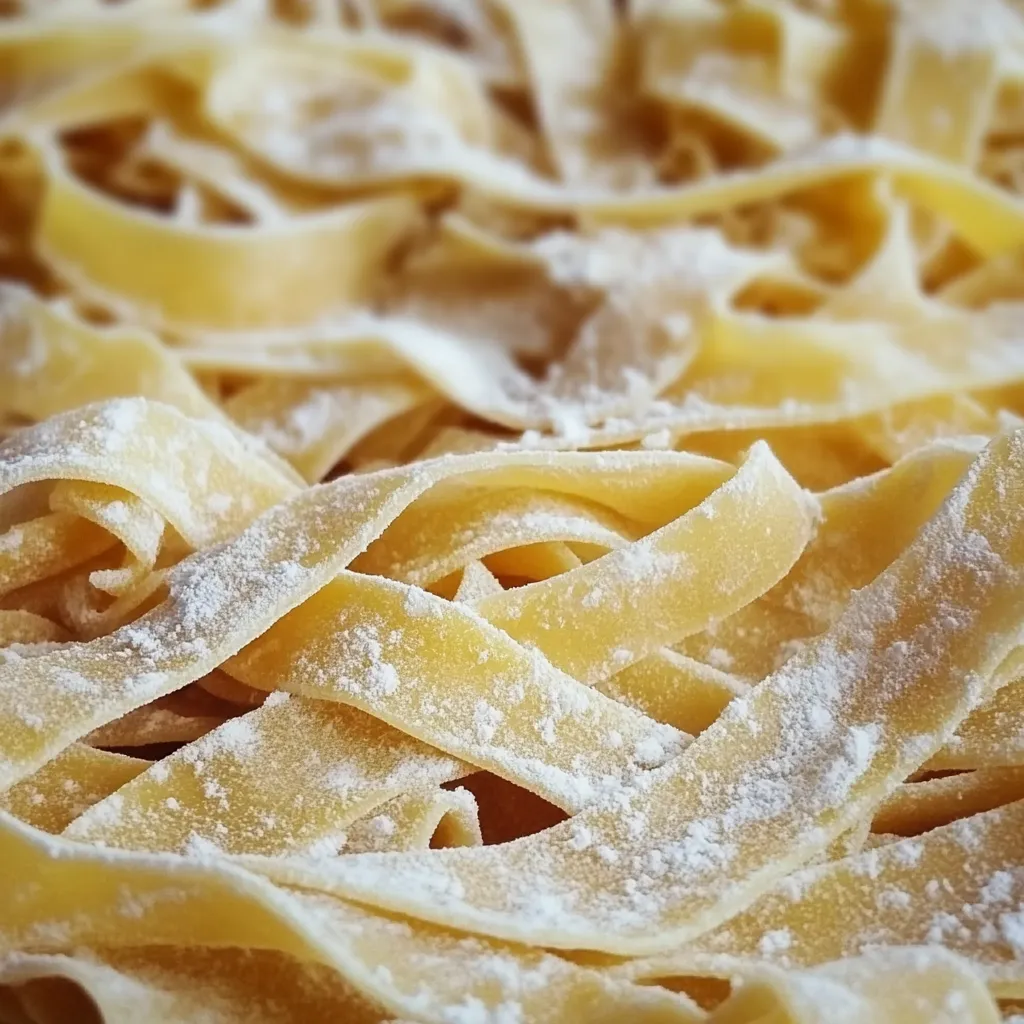 Save
Save
These silky, tender noodles prove that some of the most satisfying comfort foods come from the simplest ingredients combined with a little patience and care. With just five pantry staples, you can create pasta that rivals anything from expensive specialty stores, delivering that perfect chewy texture and rich egg flavor that makes homemade noodles so irresistible. The process itself becomes almost meditative, from the rhythmic kneading to the satisfying roll and cut that transforms simple dough into beautiful, golden strands.
The first time I attempted homemade noodles, I was amazed at how something so simple could taste so incredibly different from dried pasta. My grandmother used to make these for Sunday dinners, and recreating that same silky texture and rich flavor brought back so many wonderful memories. Now making fresh noodles has become my favorite weekend activity, especially when I want to create something special that fills the house with that unmistakable aroma of fresh pasta cooking.
Essential Components
- Large fresh egg: Choose farm-fresh eggs with bright orange yolks for the richest flavor and most beautiful golden color
- Additional egg yolks: Provide extra richness and that signature deep yellow hue that makes homemade noodles so appealing
- Cold water: Helps bind the dough while keeping it manageable during the mixing and kneading process
- Fine salt: Enhances the egg flavor and strengthens the gluten structure for better texture and elasticity
- All-purpose flour: Forms the foundation of the dough, providing the protein structure needed for proper noodle texture
- Extra flour for dusting: Essential for preventing sticking during rolling and cutting processes
Complete Preparation Process
- Wet Ingredient Assembly:
- Crack the large egg and separate the two additional yolks into a medium mixing bowl, whisking thoroughly until completely smooth and well combined. Add cold water gradually while continuing to whisk, creating a uniform liquid base that will distribute evenly throughout the flour for consistent dough texture.
- Dough Formation:
- Sprinkle salt over the egg mixture, then gradually add flour while stirring with a fork or wooden spoon until a rough, shaggy dough begins to form. The mixture will look quite messy at first, but continue mixing until most of the flour is incorporated and the dough starts coming together into a cohesive mass.
- Kneading Process:
- Transfer the rough dough to a clean, lightly floured work surface and begin kneading with the heel of your hand, pushing the dough away from you, then folding it back over itself. Continue this rhythmic process for eight to ten minutes until the dough becomes completely smooth, elastic, and slightly glossy. Add small amounts of flour if the dough feels too sticky.
- Resting Period:
- Wrap the kneaded dough tightly in plastic wrap and allow it to rest at room temperature for thirty minutes. This crucial step relaxes the gluten strands, making the dough much easier to roll out thin without springing back, resulting in more tender finished noodles.
- Rolling Technique:
- Divide the rested dough into two equal portions for easier handling. On a generously floured surface, roll each portion into a thin sheet approximately one-eighth inch thick, turning and flouring frequently to prevent sticking. The dough should be thin enough that you can almost see through it.
- Cutting Method:
- Using a sharp knife or pizza cutter, slice the rolled dough into strips of your desired width - narrow for delicate noodles or wider for heartier versions. Toss the cut noodles immediately with a light dusting of flour to prevent them from sticking together while you finish cutting.
- Optional Drying:
- Allow the cut noodles to sit for fifteen to twenty minutes if you prefer firmer texture, or cook them immediately for the most tender results. The brief drying time helps the noodles hold their shape better during cooking.
- Cooking Process:
- Bring a large pot of generously salted water to a rolling boil, then add the fresh noodles and cook for just two to three minutes until tender but still with slight bite. Fresh pasta cooks much faster than dried, so watch carefully to avoid overcooking.
 Save
Save
These homemade noodles have become my favorite way to add substantial nutrition to comfort food meals. The fresh eggs provide high-quality protein that keeps everyone satisfied, while the simple ingredients mean we know exactly what we're eating. There's something deeply satisfying about creating nourishing food from such basic components, and the nutritional benefits feel like a bonus on top of all that incredible flavor.
Serving Inspirations
These tender noodles shine in classic chicken noodle soup where their silky texture absorbs the rich broth beautifully, or serve them simply tossed with butter, fresh herbs, and Parmesan cheese for an elegant side dish. They make an excellent base for beef stroganoff or creamy mushroom sauces that cling perfectly to their slightly rough surface. For lighter preparations, toss with olive oil, garlic, and fresh vegetables for a simple yet satisfying pasta dish.
Creative Variations
Transform these basic noodles by incorporating fresh herbs like basil or parsley directly into the dough for beautiful color and flavor. Spinach powder or pureed spinach creates gorgeous green noodles, while a touch of turmeric adds golden color and earthy flavor. For heartier versions, substitute part of the all-purpose flour with whole wheat or semolina flour for different textures and nutty flavors that pair beautifully with robust sauces.
Storage Solutions
Fresh uncooked noodles can be stored in the refrigerator for two to three days when dusted with flour and kept in airtight containers, or frozen for up to three months on baking sheets before transferring to freezer bags. Cooked noodles are best enjoyed immediately, though leftovers can be refrigerated for up to two days and reheated gently with a splash of broth or butter to restore moisture.
 Save
Save
This recipe has taught me that some of the most rewarding cooking experiences come from mastering simple, fundamental techniques that connect us to generations of home cooks. The process of transforming basic ingredients into beautiful, delicious noodles never fails to amaze me, and sharing them with family and friends creates those special moments that make all the effort worthwhile. Every batch reminds me that the best comfort foods are often the ones made with our own hands and filled with love.
Recipe FAQs
- → How long do homemade egg noodles take to cook?
- Fresh egg noodles cook very quickly - just 2-3 minutes in boiling salted water. Watch them carefully so they don't overcook.
- → Can I make egg noodles without a pasta machine?
- Yes! Just use a rolling pin to roll the dough thin, then cut into strips with a sharp knife. It works perfectly fine.
- → How do I store leftover uncooked noodles?
- Store in an airtight container in the fridge for 2-3 days or freeze for up to 3 months. Dust with flour to prevent sticking.
- → Why does my dough need to rest for 30 minutes?
- Resting relaxes the gluten, making the dough much easier to roll out thin. Don't skip this step for best results.
- → What dishes work best with homemade egg noodles?
- They're perfect for chicken soup, beef stroganoff, buttered noodles, or any recipe calling for egg noodles.
